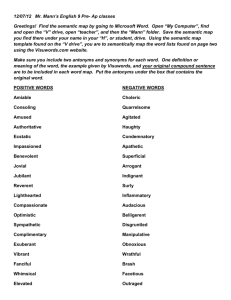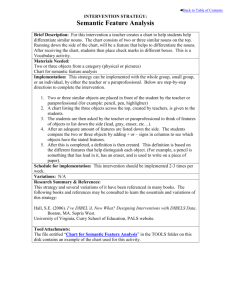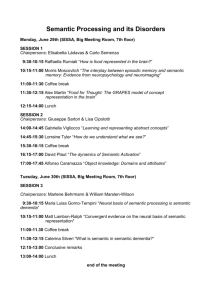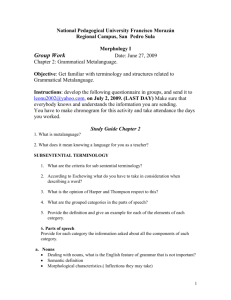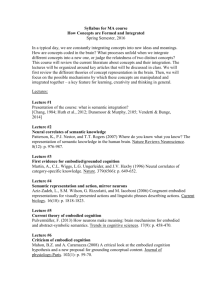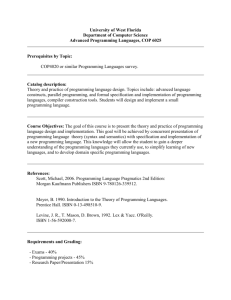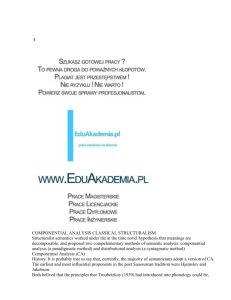abstract - Embodied and Situated Language Processing 2012
advertisement
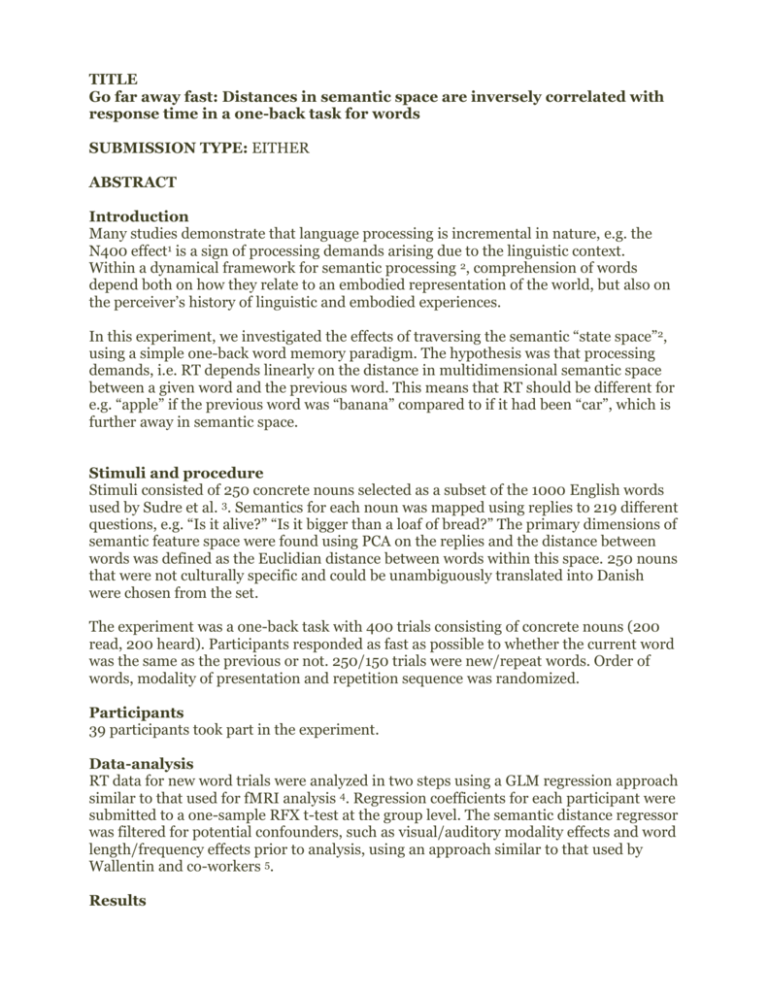
TITLE Go far away fast: Distances in semantic space are inversely correlated with response time in a one-back task for words SUBMISSION TYPE: EITHER ABSTRACT Introduction Many studies demonstrate that language processing is incremental in nature, e.g. the N400 effect1 is a sign of processing demands arising due to the linguistic context. Within a dynamical framework for semantic processing 2, comprehension of words depend both on how they relate to an embodied representation of the world, but also on the perceiver’s history of linguistic and embodied experiences. In this experiment, we investigated the effects of traversing the semantic “state space”2, using a simple one-back word memory paradigm. The hypothesis was that processing demands, i.e. RT depends linearly on the distance in multidimensional semantic space between a given word and the previous word. This means that RT should be different for e.g. “apple” if the previous word was “banana” compared to if it had been “car”, which is further away in semantic space. Stimuli and procedure Stimuli consisted of 250 concrete nouns selected as a subset of the 1000 English words used by Sudre et al. 3. Semantics for each noun was mapped using replies to 219 different questions, e.g. “Is it alive?” “Is it bigger than a loaf of bread?” The primary dimensions of semantic feature space were found using PCA on the replies and the distance between words was defined as the Euclidian distance between words within this space. 250 nouns that were not culturally specific and could be unambiguously translated into Danish were chosen from the set. The experiment was a one-back task with 400 trials consisting of concrete nouns (200 read, 200 heard). Participants responded as fast as possible to whether the current word was the same as the previous or not. 250/150 trials were new/repeat words. Order of words, modality of presentation and repetition sequence was randomized. Participants 39 participants took part in the experiment. Data-analysis RT data for new word trials were analyzed in two steps using a GLM regression approach similar to that used for fMRI analysis 4. Regression coefficients for each participant were submitted to a one-sample RFX t-test at the group level. The semantic distance regressor was filtered for potential confounders, such as visual/auditory modality effects and word length/frequency effects prior to analysis, using an approach similar to that used by Wallentin and co-workers 5. Results A significant effect of semantic distance on response time was found (t(38)=-2.03, p<0.05). This shows that participants were faster at detecting a new word when it was semantically dissimilar from the previous. References 1 Kutas, M. & Hillyard, S. A. Reading senseless sentences: brain potentials reflect semantic incongruity. Science 207, 203-205, (1980). 2 Spivey, M. The Continuity of Mind (Oxford Psychology). (Oxford University Press, 2007). 3 Sudre, G. et al. in 17th Annual Meeting of the Organization for Human Brain Mapping. 4 Friston, K. J. et al. Statistical Parametric Maps in Functional Imaging: A General Linear Approach Hum. Brain Mapp. 2, 189-210, (1995). 5 Wallentin, M. et al. BOLD response to motion verbs in left posterior middle temporal gyrus during story comprehension. Brain Lang. 119, 221-225, (2011).

